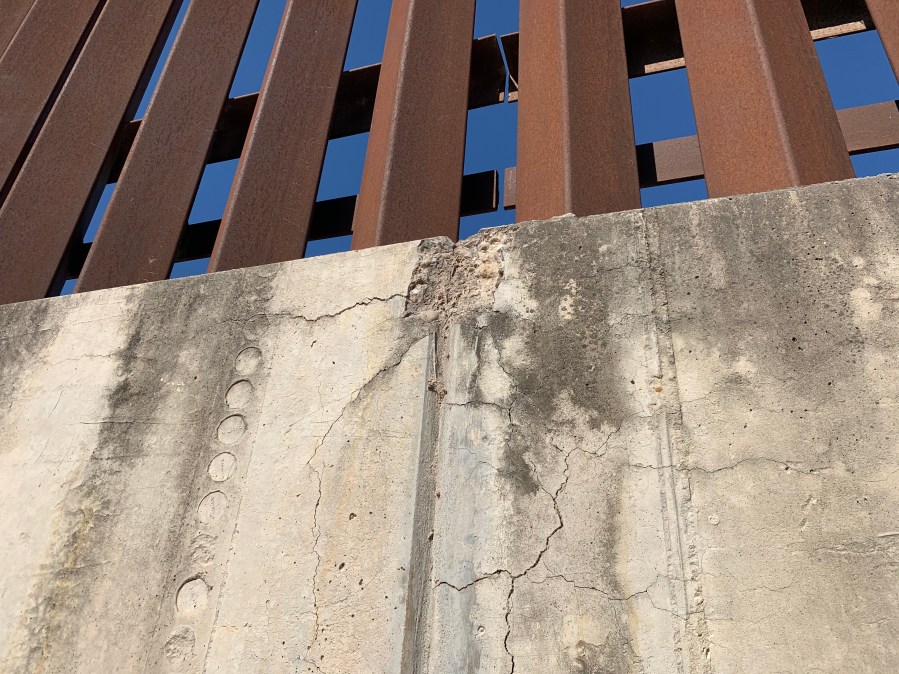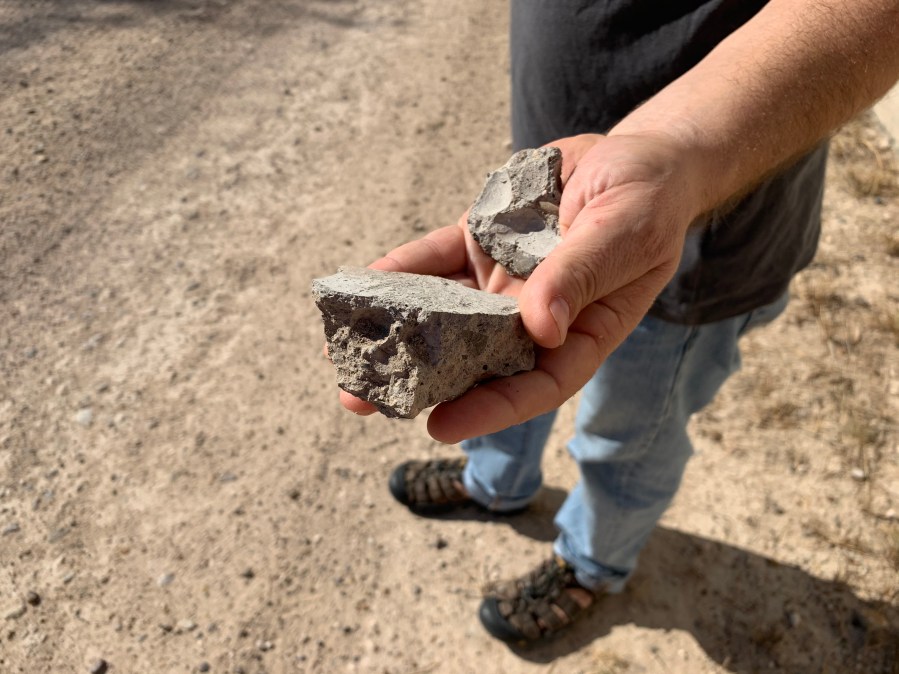HIDALGO, Texas (Border Report) — Cracks in the concrete levees below the existing border wall in South Texas, as well as missing drainage flaps, are raising concerns by some local environmentalists who fear the structure is not ready to handle additional construction of a new border wall.
Adding to the confusion is the question of how various local, federal and international agencies work together to maintain the concrete levee and how it gets funded.
In an email to Border Report, officials with U.S. Customs and Border Protection said, “Maintenance on the current fence belongs to CBP Program Management Office Directorate via the Comprehensive Tactical Infrastructure Maintenance and Repair (CTIMR) program.”
CBP declined to expound upon what the CTIMR program is or how it works.
The federal agency did say that cracks along the concrete levee wall will be repaired through the program in accordance with the U.S. International Boundary and Water Commission (IBWC).
“IBWC is responsible for overseeing the existing flood protection however CBP maintains the structure through the CTIMR program,” the email said.
IBWC also refused to explain the repair process, saying it is under the Department of Homeland Security.
“The USIBWC cannot explain what the CTIMR is as that is seemingly a DHS program. Please ask DHS to elaborate. The USIBWC maintains the levee system for flood control and water delivery purposes. Since the border wall is a DHS program, it is IBWC protocol to refer all questions to DHS,” IBWC spokeswoman Lori Kuczmanski wrote in an email on Friday.

IBWC owns the land that the levees sit on. Miles and miles of non-contiguous segments of these structures were built in South Texas in 2008 and 2009 under money from the 2006 Secure Fence Act, as a way to fix drainage issues in flat Hidalgo County in deep South Texas.
The levees were built by Hidalgo County Drainage District using federal funds and oversight.
Hidalgo County Drainage District officials said they are not involved in the upkeep and management of the existing structure walls. They said all upkeep is managed federally by IBWC and CBP but they did not know how that process works.
Environmentalists fear that cracks in the levee might indicate structural weaknesses and that missing flaps could cause water to leak and lead to flooding, which is what the levee system is supposed to prevent.
They mostly worry that cracks in the concrete — which are visible — could indicate that the structure might not be able to withstand the pressure and force from new construction when 30-foot-tall metal bollard border wall panels and new concrete construction base are added on to it to fill in the existing sections.

Scott Nicol, co-chairman of the Sierra Club’s Borderlands Campaign took Border Report to a section of the existing border levee wall in the town of Hidalgo on Oct. 27 and showed where concrete is chipped and a drainage flap is missing.
The drainage cover flap is designed “to flap open and then when the water comes it would push it closed. The pressure would keep it closed and that would keep water from backing into it. This one has been broken off for at least a year I’ve seen a number others that were also broken off,” Nicol said.
“This is supposed to still function as a levee — in addition to being a border wall which doesn’t really have any functionality. And if you’ve got water getting into the inside of that levee it’s not going to work for very long,” Nicol said. “We’re directly south of Diaz Junior High in Hidalgo, so if the wall fails, if the levee fails, then that could put those kids and their neighborhood at risk.”
Exactly how a wall can fail and if the existing structures are even remotely at risk remain uncertain.
But this area did flood in 2010 — the year after it was built — and several areas remained underwater for over four months, causing the deaths of hundreds of tortoises, Nicol said.
‘No maintenance is currently required’
CBP wrote that the existing walls have been studied prior to new border wall construction.
The “United States Army Corps of Engineers (USACE) conducted various surveys to include geotechnical surveys for construction sustainability. No repairs will be needed at this time however the CTIMR program can also conduct repairs as needed.”
When asked whether the improvements are needed to increase the sustainability of the old wall to withstand the construction force and vibrations, CBP responded: “No improvements will be needed, multiple surveys were conducted by USACE near the connection points and no maintenance is currently required.”
CBP has announced it will build 65 miles of new border wall in South Texas, including 22 new miles of border wall in Hidalgo County. President Trump has said the wall is needed to fill in existing gaps to keep out migrants who are illegally entering the country.
Read a Border Report story on new border wall in Hidalgo County.
The Rio Grande Valley Sector of the U.S. Border Patrol has the highest number of migrant arrests of any sector in the United States, CBP says, and the most seizures of marijuana.
IBWC on Wednesday will hold its quarterly meeting in Mercedes, Texas, and Border Report plans to attend and get more information on the levee upkeep.
















